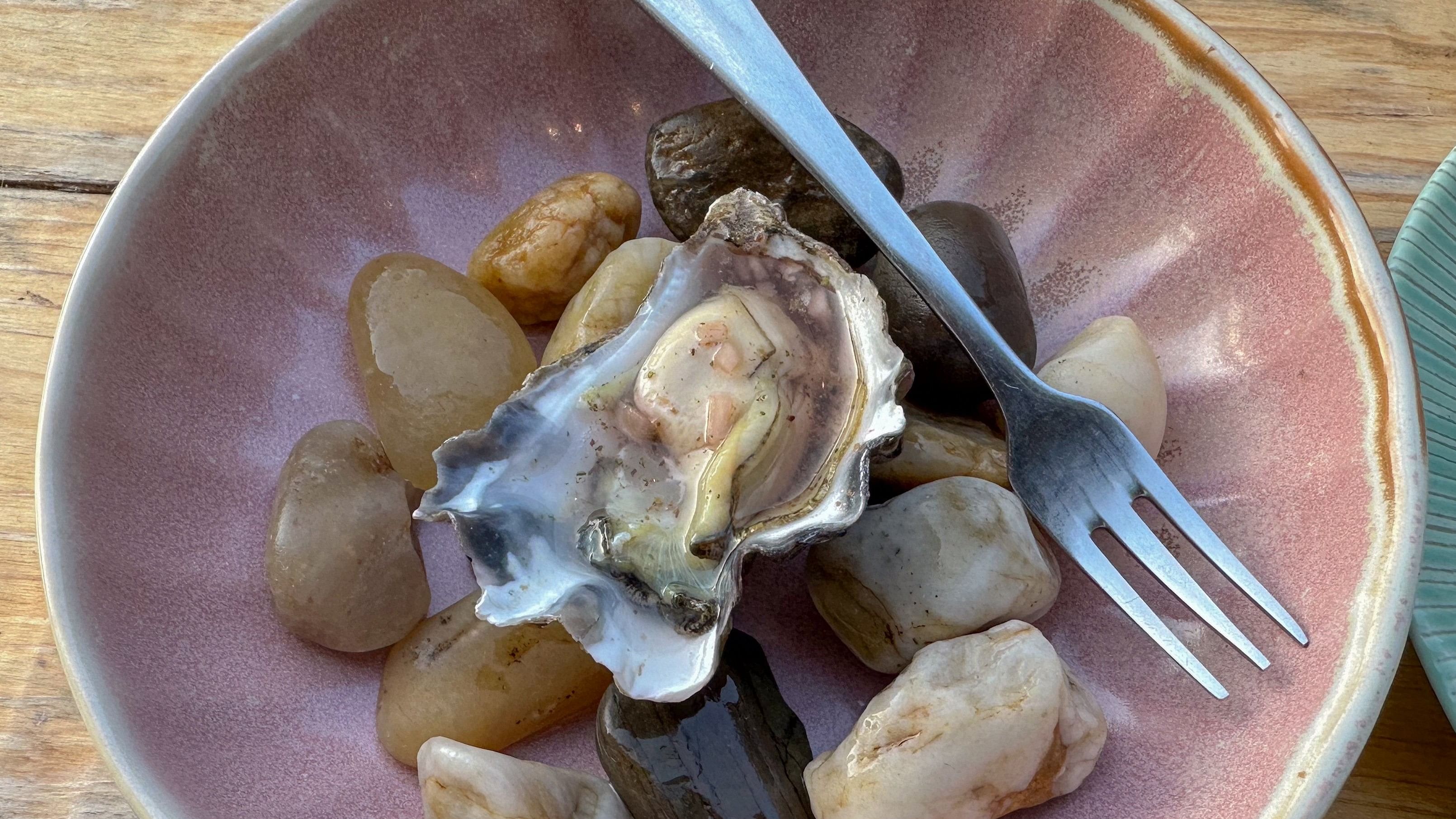
Long before the dawn of the European colonisers, the natives sustainably harvested and ate vast quantities of oysters.
Credit: Sonia Nazareth
Waistline be damned, is the thought that runs through my head each time I visit Melbourne in particular and Australia in general. Varying climatic conditions around Australia have meant a wide range of local produce. Geographical remoteness also implies a uniqueness to the seafood on offer. Think Moreton Bay bugs (a crustacean with a sweet rich flavour profile) and the Australian rock lobster. Contributing to the gastronomic complexity is the influx of immigrants over time, from places as varied as Greece, Turkey, Lebanon, China and Malaysia (amid a host of other nationalities). Marry these migrations to fresh wide-ranging produce, an army of superlative chefs with inventive styles, and you’ll see how Mod Oz, (a term used to classify contemporary Oz cuisine) a melange of East and West, was born.
Food tours abound in Melbourne and no matter which you embark upon, you’ll taste the diversity of the city’s offerings, from authentic Chinese dumplings to French-styled sweet treats. I learn on one of these trawls through the laneways and arcades that Melbourne is so famous for, with history in my ear, gelato in my hand and my senses stimulated by all manner of street art, that the city with its strong Greek and Italian influence, also prides itself on a thriving café culture. Melbourne baristas are among the world’s finest, dishing out everything from cold brews to flat whites. Hunger for specific foods in Melbourne is clearly much more than a fad and I run into travellers here in pursuit for instance, of a particular Lamington, the quintessential Aussie dessert, made from squares of butter cake, coated in chocolate sauce and drizzled with desiccated coconut.
Adding to this culinary wealth is the fact that native ingredients used by Aboriginal communities for thousands of years have experienced a resurgence. Gathering food successfully requires a deep understanding of the local environment and knowing how and where to harvest food. The National Indigenous Culinary Institute, works with leading restaurants around the country, to train indigenous chefs. Native ingredients have been deconstructed, and are now manifestly a part of Australia’s
edible heritage. The wild harvesting of ingredients like quandong (native peach), bush tomato, wild lime, honey and rosella (a bright red flower with a tart flavour like rhubarb), is widely practised.
These ingredients can be encountered in dishes across all kinds of dining establishments. On menu cards around town, you’ll find an abundance of bush foods or tucker-native meats like kangaroo and emu, alpine berries and mountain peppers, shellfish and fish of the coast. To work off the excesses of all my dining, I headed to the Royal Botanic Gardens, which runs an Aboriginal heritage walk, that sensitises us to the abundant native plant life within the garden. Underlying native philosophy is the belief that whether the Aborigines were looking for food or medicine, they took just enough to feed their own people, and never over-hunted or collected in any one area, ensuring food for the next group that arrived. Environmental respect was key.
On the subject of sustainability, the historic Queen Victoria Market, one of the largest in the Southern Hemisphere, is an enormous fresh produce market, selling fresh fruit, vegetables, fish, meat, dairy products, deli goods, artisanal bakery products and other organic offerings. In its encouragement of the small-scale and sustainable producer, it stands firmly against the mass produced. Here you can treat yourself to the most whimsical of offerings, from herbal teas grown hydroponically to gelato from recipes handed down three generations, liquorice straps to artisanal cheese, vegan-friendly rose-flavoured Turkish delight to organic nut butters.
In the face of the city’s culinary offerings, it comes as no surprise then that Melbourne hosts a food and wine festival each March. What began in 1993 as a wee festival with no more than a dozen events, blossomed into a celebration that draws over 3,00,000 people and a range of celebrity chefs of the ilk of Ben Shewry and Nigella Lawson. From the roster of feasting events, I signed up for the World’s Longest Lunch. I took my seat at a 600-metre-long table in the city park that is King’s Domain for an al fresco dining experience, attended by close to 1,700 people. Chefs put a spin on dishes they grew up eating and you’ll usually find local produce, whatever is in season really, combined with classic techniques to create a three-course meal.
This year it was designed by Chef Andrew McConnell. I sat down to a starter of stuffed zucchini flowers, grilled and pickled heirloom vegetables, feta and green sauce. For the main course there was chicken, smoked sausage and kohlrabi remoulade, and I finished it off with chocolate tart and cream Chantilly as dessert.
Although I barely knew the people I was seated next to, by the end of the lunch I had a dozen new friends. And that’s precisely the point of it all, connection. I was reminded here of how I felt participating in a quintessential Aussie barbecue relishing a variety of meats on the grill amid the camaraderie of a local family. Generous produce and warm-hearted hospitality, are after all as Aussie as it gets.